At the forefront of confrontation: UAVs against air defense
Article "Unmanned" swarms "are preparing for battle" aroused great interest. However, only a few questions were raised in it. A comprehensive consideration of the topic requires the disclosure of the problems of countering air defense ꟷ UAVs, as well as the organization of research and development.
This article is devoted to the opposition of air defense ꟷ UAVs (without excessive detail in history combat UAVs). Taking into account the open nature of the article and the acuteness of the problematic, we will focus only on the key points.
Initially, the active development of unmanned aerial vehicles (UAVs) in the West was caused (back in the 30s - 40s of the last century) not by the tasks of the "battlefield", but by the search for a means of high-quality preparation of air defense crews. It is appropriate here to recall the case of such exercises in Great Britain. Immediately before the Second World War, when the inspected air defense systems (previously successfully “perforating” target cones towed behind aircraft) could not shoot down a radio-controlled target (and with rather modest characteristics). This happened in the presence of Winston Churchill, and immediate and tough measures were taken to dramatically increase combat training. The British were in time for the war.
Vietnam
In the summer of 1965, the USSR delivered the first divisions of the S-75 air defense system to North Vietnam. Then a quiet life in the Vietnamese sky for aviation USA is over.
Taking into account the skillful and unconventional actions of the air defense crews (both Soviet and Vietnamese), attempts to "force a breakthrough" in the air defense with large groups of aircraft ended in large losses for the United States. We needed "other solutions", one of which was the use of electronic warfare (EW), which were actively used during the Second World War.
However, obtaining the necessary intelligence data on the Vietnamese air defense systems (to suppress them with electronic warfare) ran into serious problems. The radar of the air defense missile system was turned on for a very short time, using the data of the duty officers (who worked in a different frequency range).
The use of classic electronic intelligence aircraft (RTR) in this situation was ineffective. It was necessary to record high-quality signals from the air defense radar and the air defense fuse directly in the process of hitting the target (and the entire cyclogram of the air defense system combat work). This could only be done drones.
The Air Force and Navy have used them since the late 30s. for testing air defense systems. However, minimizing the necessary RTR onboard equipment for installation on UAVs, as well as ensuring high-speed transmission of reconnaissance data to a special aircraft, became extremely difficult technical problems.
In the course of hard work, the mass of the RTR station was reduced by almost ten times. And (albeit with a number of difficulties), but she was able to be placed on the Ryan Aeronautical 147 UAV.
The high technical complexity of the entire system led to multiple failures. But on February 13, 1966, everything changed. The destroyed C-75 air defense missile system of the Ryan Aeronautical 147E UAV managed to receive and transmit all the necessary amount of information.
Immediately, the revision of the UAV was started for an experimental prototype of an active jammer station (a modification of the Ryan Aeronautical 147F UAV), which, although with great difficulty, still fit on a small drone. Since July 1966, the Ryan Aeronautical 147F made several flights over North Vietnam and was not shot down, despite the use of more than 10 S-75 air defense systems on it.
In the shortest possible time, an AN / APR-26 station was made on the basis of the drone's active jamming station with mass equipment of aircraft with it. The result of this work clearly demonstrates the following: if in 1965, 4 missiles were consumed per one shot down American aircraft, then by 1967 there were already about 50 missiles.
Note: This "zeroing" of the effectiveness of the S-75 air defense system caused an immediate reaction in the USSR, with the necessary improvements (including directly in the jungles of Vietnam), with a corresponding increase in the effectiveness of the air defense system. The “shield and sword” competition continued.
Speaking about the period of the Vietnam War, it should be noted that back in 1971, the United States carried out the world's first air-to-ground missile launch from the BGM-34 Firebee UAV. However, at that time it was too complicated and ineffective. The time of such UAVs will come only in 30 years.
Near East
During the Yom Kippur War in 1973, the Israeli side had 25 MQM-74 Chukar UAVs (targets) and actively used them during hostilities to provoke Arab air defense systems to "work for themselves" (to open and destroy them if necessary). All of them were lost during the hostilities, but they fulfilled their task.
Their use gave a powerful impetus to the creation of their own UAVs in Israel, and in a variety of guises and in many applications. Given the fact that the country was constantly at war, the issues of their combat effectiveness were at the forefront.
It should be especially canceled that for the first time in the world, the creation of ground-based launchers of anti-radar missiles (PRR) was carried out to ensure their maximum covert and sudden use of radio-emitting air defense systems. Formally, these were missiles, i.e. "Not like drones." However, it should be borne in mind that the issue of "legal separation" of the category of missiles and UAVs is still controversial. And for example, domestic experts viewed American long-range attack UAVs as a violation of the "missile" treaty on the INF Treaty.
In addition, from the experience of using the first ground-to-ground complexes with PRR, the first mass UAV-kamikaze Harpy of Israel Aerospace Industries finally appeared (already in the XXI century).
The highest point of confrontation between air defense and aircraft (both manned and UAV) was the destruction of the air defense system (19 out of 24 deployed air defense missile systems in the area of 30 km along the front and 28 km in depth) of the Syrians in the Bekaa valley on June 9, 1982 (Operation Artsav ").
UAVs played a decisive role in the operation, performing tasks:
- reconnaissance and observation (including from relatively small distances from the air defense missile system due to the use of unobtrusive fiberglass UAVs Mastiff);
- conducting electronic intelligence;
- electronic suppression of air defense systems;
- imitation of false targets.
Keres ground launchers ensured the sudden and most covert destruction of the AGM-78 air defense radio-emitting air defense systems.
Having full information on the air defense system (including on camouflaged air defense systems), the Israelis disorientated her with interference and false targets, suddenly knocked out the attendants of the anti-missile defense system PRR AGM-78 of the Keres complexes and finished off the whole day (in fact, the most powerful group in terms of air defense density in the world) by air strikes.
The defeat of the Syrian air defense grouping (who had performed well in the previous war) was complete and had far-reaching military and political consequences.
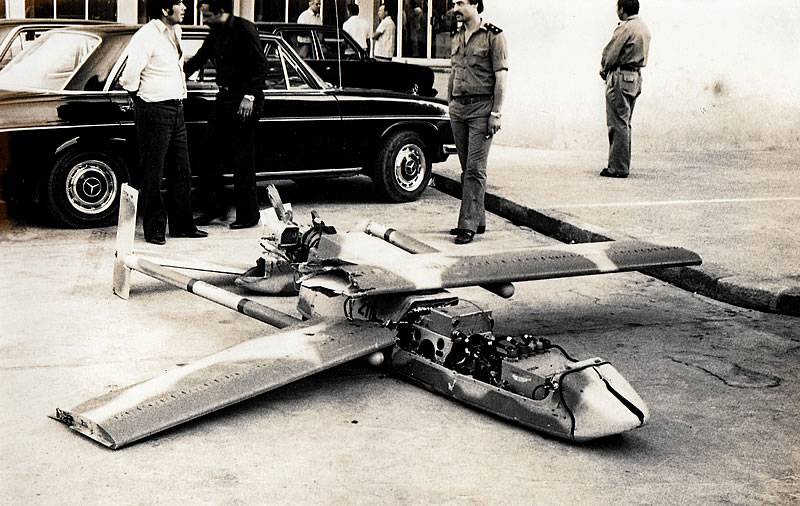
Downed by the Syrian artillery UAV Mastiff. Source: National Defense, oborona.ru
With the advent of new air defense systems, the tactics of their reconnaissance by "provoking" work on the UAV continued to work. On December 6, 1983, 200 Israeli BQM-3 UAVs were shot down over Lebanon by S-74 air defense missile systems.
"Desert Storm"
During the war in the Persian Gulf in 1991, the United States used 44 BQM-74C UAVs for reconnaissance air defense systems. BQM-74 Chukar is a standard mass (80% of shooting is carried out on it) aerial target of the US Armed Forces. We have to regret very much about the absence of its analogue in our country (as a result of which the newest shipborne air defense systems in our country are even carried out State tests on inappropriate Saman and RM-15 targets, or even parachute targets, as was the case on the recent Odintsovo MRK Gosakh ).
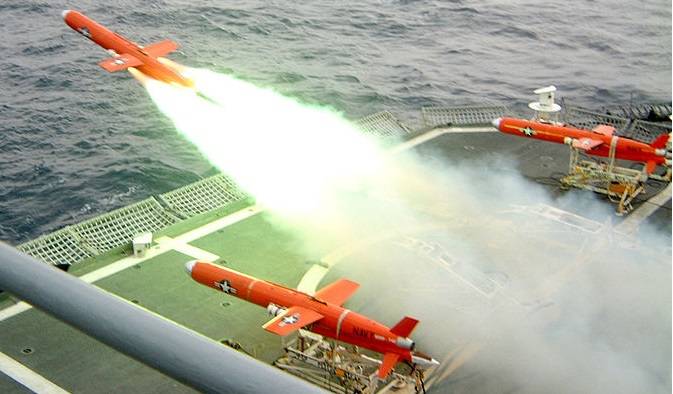
Launch of BQM-74 Chukar targets for testing naval air defense systems. Source: Wikimedia Commons
Syria and the war with ISIS
A feature of the hostilities against ISIS of the Armed Forces of Russia and the United States was not only the wide and effective use of their own UAVs, but also the very active and massive use of "homemade" UAVs by the enemy.
Note: Despite the deliberately primitive "external design", the design of the UAV (from terrorists) was highly appreciated by specialists.
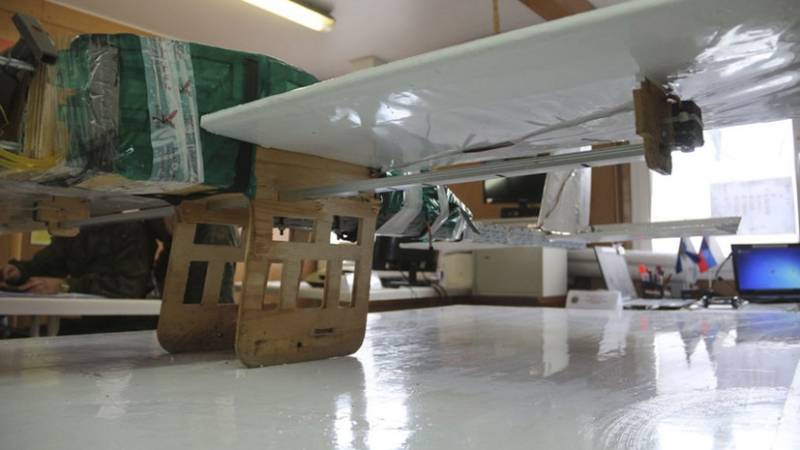
One of the shot down (planted by means of electronic warfare) UAVs. Source: Russian Ministry of Defense, mil.ru
Initially, our air defense and electronic warfare systems showed themselves very, very well.
However, when repelling subsequent strikes, “problems arose” (especially for the Pantsir air defense missile system).
It can be unambiguously argued that those who made these UAVs had very competent consultants. In addition, the nature of their use against the Khmeimim airbase unambiguously spoke of the conduct by the "interested structures" of a special operation for reconnaissance of domestic air defense systems: UAVs flew not so much to defeat targets (with the proper approach, the consequences of the first strikes could be much more difficult for us), but rather provoking the work of air defense and electronic warfare systems for their analysis.
To a large extent, this was connected with the scandal with a sharp decrease in the effectiveness of some of our air defense systems. The presence of a number of problems (further eliminated by revision) in the course of hostilities was eventually recognized by the Chief Designer of the Pantsir. The adversary (here, it is likely that the Supreme's formulation will be more precise - “so-called partners”) actively explored the strengths and weaknesses of our air defense systems in the process of using ISIS UAVs and used them.
Karabakh-2016
In the course of short hostilities in Nagorno-Karabakh, the Armed Forces of Azerbaijan for the first time were the Israeli UAV-destroyers Harop of the IAI company and a number of other UAVs. Their use was in the nature of military trials with the defeat of various targets (covered armored vehicles, a moving bus, etc.).
An international scandal was caused by the information that surfaced in 2017 about the direct participation of representatives of the Orbiter 1K UAV developer, Aeronautics Defense Systems, in these tests (with the killings of Armenians during UAV strikes). As the saying goes, "nothing personal, just business."
The Armenians possessed a significant number of Osa-AK air defense systems, which, subject to their timely and modern modernization, could well detect large enough Harop UAVs and hit them. However, the Armenian side did not draw any conclusions from these first calls and strikes against Karabakh in 2016.
Yemen
A striking example of successful confrontation with a disproportionately more powerful military machine of the enemy is the actions of the Yemeni Houthis against the coalition led by Saudi Arabia. And here not only the courage and dedication of the Houthis themselves was observed, but also the extremely skillful, unconventional and effective use by them (and their Iranian partners) of various high-tech weapons: from the long-obsolete Elbrus ballistic missiles and aircraft R-27T (from ground-based launchers) to UAVs, with which they successfully solved not only tactical, but also operational-strategic tasks (by delivering long-range strikes on important elements of the infrastructure of Saudi Arabia).
Yes, some of their UAVs are knocked down by the Saudi air defense.
But most of them still achieve their goals. With extremely painful consequences for the Saudis.
In fact, in this war, UAVs for (lost their aircraft) the Houthis became a strategic tool against powerful and wealthy Saudi Arabia.
Libya 2019
For the first time, the Bayraktar TB2 medium attack UAVs with guided aerial bombs (UAB) MAM-L with a range of up to 8 km and UAB MAM-C with ISN and satellite correction with a range of 14 km were widely and successfully used against air defense systems.
It should be noted that for modern air defense systems, the detection and defeat of such a UAV as Bayraktar TB2 is by no means a technical problem. Large losses of "Shell" in Libya were due to organizational reasons. As soon as they began to put things in order with this and formed an integrated air defense system, the Bayraktar UAVs began to suffer heavy losses.
Another landmark event in the fighting in Libya was the first successful use of a laser air defense system with the destruction of a UAE medium attack UAE (made in China).
Karabakh-2020
In the recent conflict in Nagorno-Karabakh, the Armed Forces of Azerbaijan destroyed only air defense systems of Armenians on "preliminary orders": 15 combat vehicles of the air defense system (three "Strela-10" air defense systems, 11 "Osa-AK / AKM" air defense systems, one "Cub" air defense system radar ), a self-propelled installation ZSU-23-4, several launchers of the S-300PS air defense system, eight radars (four types ST-68U / UM and one P-18, 5N63S, 1S32 and 1S91). Almost complete defeat was tank and an artillery group of Armenians in Karabakh.
A decisive role in this was played by reconnaissance UAVs.
It is the massive use of shock UAVs that is the main feature of this conflict.
On the verge of a military-technical revolution
It is obvious that the scale of the use of UAVs (including large groups of them) will only grow.
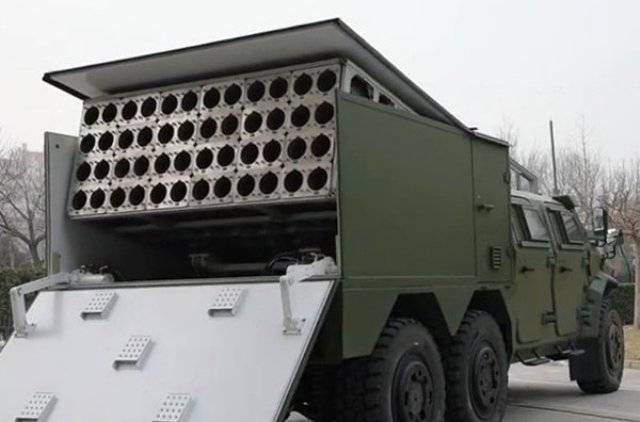
Multiple-charge launcher for combat UAVs in China.
To the west, Poland already has about 1 Warmate drone UAVs. They have a short range (000 km), and "Thor" and "Shell" are able to detect and shoot them down. But their widespread use in the course of hostilities is still an extremely serious problem for our air defense. It is impossible not to shoot down, but to shoot down everything is physically impossible simply because of the lack of ammunition of the air defense system.
The situation is similar for reconnaissance UAVs. Even for the simplest, but organizationally included in the reconnaissance and strike complexes (RUK) with long-range barrel and rocket artillery. "Foam disgrace" can circle a kilometer or two. The rifleman can't get it. But if you don't shoot him down, in minutes the shells will arrive (and very accurately arrive).
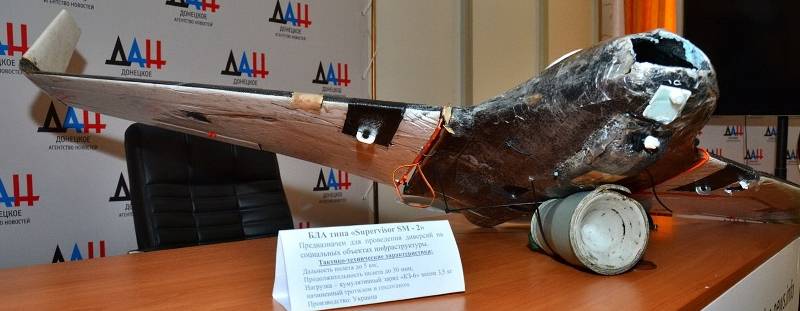
"Foam disgrace" from 404. But with a warhead (or camera). Source: dan-news.info
Meanwhile, the situation for UAVs is not as simple as it seems. And even their furious supporters talk about it (especially when they resort to knowingly dubious arguments). Below is the text widely distributed on the "open spaces of the Internet" (the key is highlighted), with comments:
The simulated test results were published in 2012. American experts saw how helpless the ships of the Navy were in front of the attacks of future "swarming" drones, and this became one of the main motives for the development of mass UAV LOCUST.
Let me emphasize: "simulated tests", i.e. on the computer. And not in reality, where it would immediately be revealed that the Aegis radar detects these drones not at "less than two kilometers", but at distances (roughly) an order of magnitude greater. With all the ensuing possibilities of using air defense (and electronic warfare) fire weapons. And it is extremely doubtful that this is just the "accidental forgetfulness" of the persons who conducted these "simulated tests".
However, there is a problem. However, it does not lie in the recognition plane such modern radars of small-sized UAVs, but also in the presence of special modifications with the ability to classify them against the background, for example, flocks of birds.
An example of the cost of such radars is:
From the point of view of the combat stability of air defense systems and radars near the front line (and today the United States will practice the tasks of destroying our military air defense with long-range artillery), it is extremely important to ensure the operation of their radars and firing missiles in motion. And such a task for the "Tor" air defense system was solved (the "ship experience" of firing while rolling was useful).
The problem of fighting air defense against small UAVs is in the plane of their defeat, when the millionth missile defense system is spent on UAVs worth hundreds of dollars (from the comments of American generals to the reports on the successful destruction of the air defense missile systems).
Of course, this is an exaggerated example. The Houthis used much more sophisticated and effective UAVs than ISIS's $ 300 AliExpress Crafts (which the US had to deal with in Iraq and Syria). $ 3 million for the SAM is the exclusive US price tag for the wealthy Pinocchio in petrodollar countries.
The above-mentioned price tag of small UAVs made according to "military requirements" (10-20 thousand dollars) is close to that for our ATGMs of the "Kornet" and "Attack" types. ATGM "Kornet-D" must ensure defeat (including small-sized UAVs).
Has the problem of economically destroying the "extras" of small UAVs been solved? No, not solved. And there are many reasons for this (and not all of them should be given in an open article). A good example of this is the development of "Kupol" and KBP (the latter is the developer, including the "Cornet") of special "nails" - small missiles to defeat UAVs.
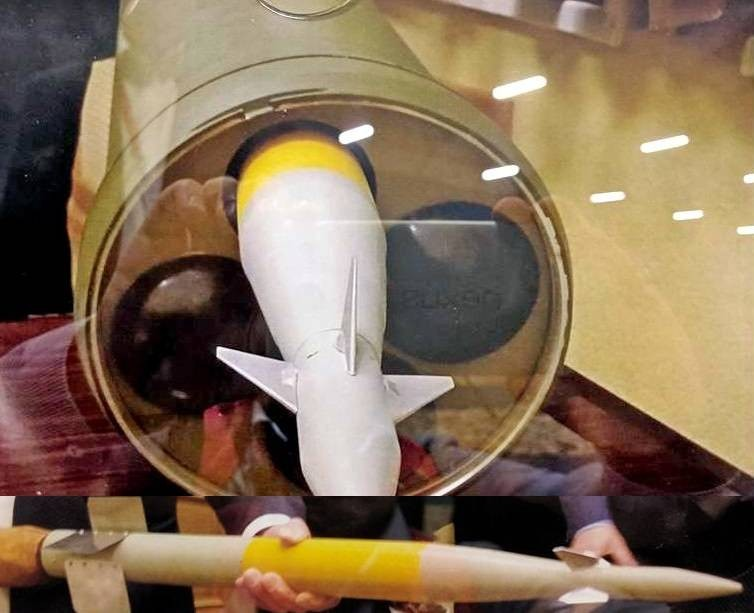
Model of short-range missiles "Nail", placed 4 missiles in one standard TPK SAM Pantsir-SM.
Information about work on such missiles appeared 3 years ago. But in an interview with TASS agency in January 2020, the chief designer of Pantsir admitted that she had not even reached the development level (ie, experimental design):
- While this is a research project, which does not bear fundamental questions, unlike a hypersonic missile, where it is necessary to pierce the dense atmosphere on hypersonic, where the control surfaces are burning. A small rocket does not require high speed, its main task is to be cheap. ... We hit such targets at a distance of 5-7 km, in the so-called near zone. It is economically feasible to make a small rocket. In addition, we can supply four times more of such missiles to the Shell.
- Are these small missiles installed in standard Pantsir launchers?
- It is planned to do so and use the same control system. Small missiles will have the same length as standard missiles, but they are smaller in diameter - instead of one standard missile, a cassette containing four ammunition will be inserted. On the machine itself, only the intellect will change.
- When can such missiles appear in the ammunition load of the complex?
- I cannot answer this question yet, but the cycle of development, production and testing of new missiles will take, I think, more than three to four years.
Obviously, there are problems. But with what? Radar sees small drones? He sees. In principle, the task of defeat is completely solved (by regular missiles). A snag (obviously) with the price of such new missiles, which suddenly becomes very "biting" (and much more than for an ATGM). But this issue (specifically on this topic and on the R&D system in general) must be considered separately.
That is, the key problem of mass small UAVs and their "swarms" for modern air defense is the military-economic: how to destroy them with an acceptable ratio of "efficiency-cost". To this can be added the problem of logistics: the presence in the ammunition load of the necessary (and sharply increased) number of missiles and the possibility of their rapid delivery and reloading of the air defense missile systems (and, in general, the presence of the necessary accumulated stock of missiles in the Armed Forces).
Of course, the question arises of the organization of air defense - not to give the enemy the opportunity to knock out our "near" air defense with medium UAVs such as Bayraktar TB2 from a safe distance and height. Despite the fact that the Bayraktar is quite a “fat” target for the Buk air defense missile system, the issue of increasing the engagement zone for the “near air defense” air defense system is very urgent. Such missiles should not be massive (since the main area of operation of such air defense systems is less than 10ꟷ20 km), but they should simply be in small numbers in ammunition in case of Bayraktar-type targets. For "Pantsir" such missiles will appear in the near future. The solution for the "Torah" can be article 9M96 SAM with the provision of its application from the transport-loading vehicle of the SAM.
The problem with military air defense (and air defense in general) is that "it is still not enough." The line of contact is too great, there are too many objects (including in the rear) that need to be reliably covered. And in this situation, it is extremely important to give the combined-arms commanders (at the company level) a separate platoon of effective means of struggle, incl. with a UAV.
An effective technical solution will be the use of shells with remote detonation for automatic cannons.
The main promising option for us was the 57-mm "Derivation", the effectiveness of which was highly appreciated by experts.
At the same time, with regard to "Derivation", it is already necessary to note a serious problem, which can impose significant restrictions on its use in battle. The active use of shells with remote detonation (especially with a massive UAV raid on a wide front) over the positions of their troops, to put it mildly, is fraught (to hit people and equipment with striking elements of their own shells). Including "Derivation" in the TK ACS in order to "always know where ours are" is possibly theoretically and unconditionally necessary, but in practice (taking into account the width of the affected area), difficulties may be even because the TK ACS itself cannot reliably know where each soldier is, even in simple situations (not to mention the conditions of fire and electronic countermeasures).
Taking this factor into account, the capabilities of shells with remote detonation of a smaller caliber begin to be perceived significantly differently (despite the fact that formally they are significantly inferior to the 57 mm caliber both in efficiency and in economics). This is the path taken in the United States: giving the Bushmaster mass cannon the possibility of using new effective ammunition (including for small UAVs).
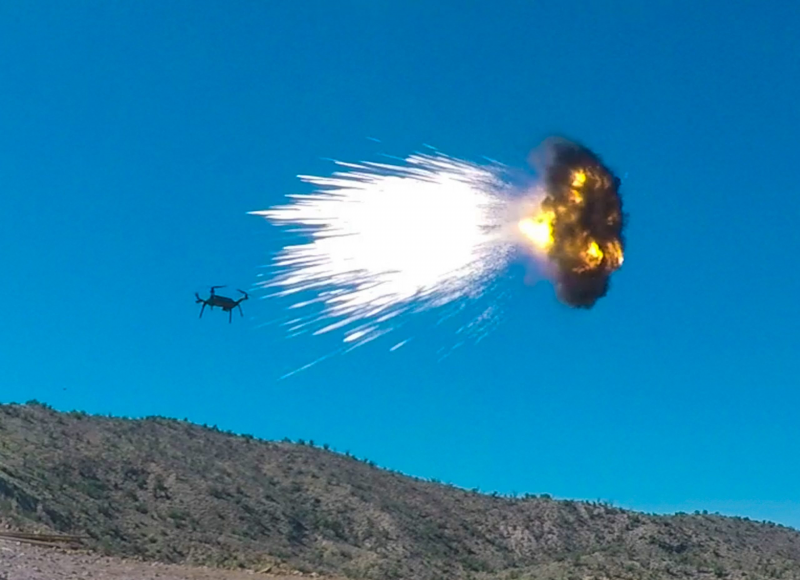
The defeat of the UAV by a shrapnel shell with remote detonation of the Bushmaster cannon. Source: Northrop Grumman
The range of application of such projectiles for the 2A42 cannons is in the area of responsibility and attention (interaction and neighbor) of the platoon commander on the BMP-2. Despite the fact that such shells are very relevant not only for air targets, but also for many ground targets, the massive saturation of infantry fighting vehicles (or armored personnel carriers) with 30-mm cannons that have the ability to use shells with remote detonation seems to be much more priority. And there are such shells, and for a long time. But not in the troops:
But this one is definitely good news ꟷ with a "smell". For too long these shells, which are badly needed by our army, go to the troops. Corporate newspaper ROMZ "Objective" dated 16.10.2014:
The shells are equipped with a built-in remote fuse, which, after exiting the bore of the gun, receives a set of code pulses generated by the sight emitter to detonate after a time interval corresponding to the distance to the selected target. Work on the development of this topic began several years ago. ...A prototype was made, which underwent autonomous preliminary tests at the CIC, and in August 2014 was sent to the proving ground of the head contractor, JSC NPO Pribor, to conduct the first full-scale tests in real operating conditions as part of a mock-up stand, with an installation of 30 -mm cannon similar to those used at armored vehicles such as BTR, BMD, BMP, MT-LBM….The first firing tests of the TKN-4GA-02 sight were carried out at the set ranges of shell detonation in various weather conditions.
The results of the tests by the commission were previously recognized as very successful, since the efficiency of detonating the shells was about 75%, which is quite sufficient for the first prototypes of the sight and shells.
... In August-September 2014, a set of works was successfully completed on another device of OJSC "ROMZ", using the principle and function of the CDU VPS - laser programmer-emitter "Foresight-O". Based on the results of preliminary tests of the device at BMPT (Nizhny Tagil) The CD of our product has been assigned the letter "O", which confirms both the high technical level of development, manufacturing of samples, and the correctness of the chosen path of step-by-step increase in the efficiency of the use of modern armored vehicles by equipping with KDU VPS complexes of various designs.
It remains only to recall the gabions (and other means of protection) at the Khmeimim airbase, the urgent need of which was repeatedly written not only in reports, but also on the Internet. However, our planes in the combat zone continued to stand wing to wing until the roast cock pecked.
In this particular situation, there is a bad feeling that it was not us who "woke up", but that the Algerian customer of the BMPT rigidly demanded such shells (to receive the letter O1) and Gosy.
Electronic warfare factor
A drone with an Aliexpress for $ 300 cannot have any noise-immune communication system, (at the same time, suppression of noise-immune communication channels of "correct military" UAVs is a very non-trivial task), equipment resistant to electromagnetic impulses.
As a matter of fact, the minimum price of the military (with communications and electronics for combat requirements) of a UAV in the West is now in the region of 15-20 thousand dollars (with attempts to reduce it to 10 thousand dollars). And this is for tactical UAVs with a range of up to 20 km.
However, serious military equipment sometimes has problems with resistance to the effects of powerful electromagnetic fields. From the historical sketches of Captain 1st Rank V.K. Pechatnikov on testing the M-22 air defense system:
It would be appropriate here to cite the article “Electromagnetic resistance weapons"From (magazine of the Ministry of Defense of the Russian Federation" Army Collection "No. 4 for 2018):
... Currently, one of the types of new weapons has appeared - electromagnetic weapons (EMO). Its main damaging factor is a powerful impulse flow radio frequency electromagnetic radiation (RFEMI), the sources of which can be divided into two classes.
The first should include sources of directional radiation (ISI) - traditional devices of vacuum electronics (magnetrons, vircators).
The second class of emitters includes direct converters of conventional explosive (explosive) energy into electromagnetic.
... Intensive research on the resistance of vehicles to electromagnetic influences (EME) began with us, unfortunately, only in 1970. The main efforts and financial costs were aimed at creating simulators of an electromagnetic pulse of a nuclear explosion (EMP NAV). As for the methodology for the experimental assessment of resistance to the impact of EMR of nuclear weapons, little progress has been achieved so far.
New government regulations require the provision of resistance to about 30 types of electromagnetic influences and the determination of quantitative values of resistance indicators, set in a probabilistic-parametric form. This is a very large and costly stage of weapon development.
On the effectiveness (or inefficiency) of domestic electronic warfare means, there are some statements from the field. Moreover, from persons, albeit biased, but had direct access to real information:
According to Hakobyan, this was possible thanks to the deployment of the Pole 21 electronic warfare equipment in Karabakh. This allowed for four days to restrict the flights of unmanned aerial vehicles, including the Turkish "Bayraktar", which is believed to have caused the greatest damage to the Armenian Armed Forces. However, unfortunately, then the enemy managed to change the control system and "bypass" these electronic warfare means.
Nevertheless, even with limited effectiveness against UAVs (made according to military requirements), electronic warfare means remain an extremely important factor against UAVs, providing effective suppression of artisanal UAVs and thereby dramatically reducing the consumption of expensive weapons for attacking UAVs.
As a matter of fact, such a scheme of countering UAV strikes has developed in our country in Khmeimim: anti-aircraft fire weapons mainly hit those that managed to "break through" through the electronic warfare.
Conclusions
If, for example, a brigade of the Armed Forces of the Russian Federation with standard weapons (and even enhanced air defense systems) were in Karabakh, heavy losses would still have been inevitable: simply because there were “too many” drones. Yes, their losses would have been great, but military-technical superiority and resources would still not be on our side.
In this regard, the issue of emergency modernization of military air defense systems is acute to ensure effective countering to new UAV threats.
As mentioned above, the key condition for reliable UAV detection is the availability of effective mobile radars. In addition to purchasing them (and placing at least a Tiger on an armored base), an urgent modernization of the Torov, Tungusok and possibly Os-AKM existing in the army is obviously needed.
It is extremely important to speed up work on "small missiles" against UAVs and long-range (about 40 km) missiles for short-range air defense systems (as an additional means to the main ammunition for missiles with a range of 10-20 km).
The task of mass equipping troops with shells with remote detonation of 30 mm caliber (primarily due to the modernization of infantry fighting vehicles) should go beyond any queue. At the same time, the issue of organizing interaction and communication with the UAV reconnaissance radar (separate and as part of the air defense system) should be resolved.
Electronic warfare equipment (both suppression equipment and RTR, including UAV radio lines) should be included in the staffs at the battalion level (with the possibility of “division” when forming separate company tactical groups).
In addition, combat training is required (starting with research exercises) for real massive UAV raids. The ground forces have an understanding of this, but when the Navy surrenders Gosy ships with parachute targets, then this is "a mistake, worse than a crime."
Of course, these are not all the conclusions. But these are the main ones.
The extremely important and very painful issue of organizing our R&D will be considered in the next article.

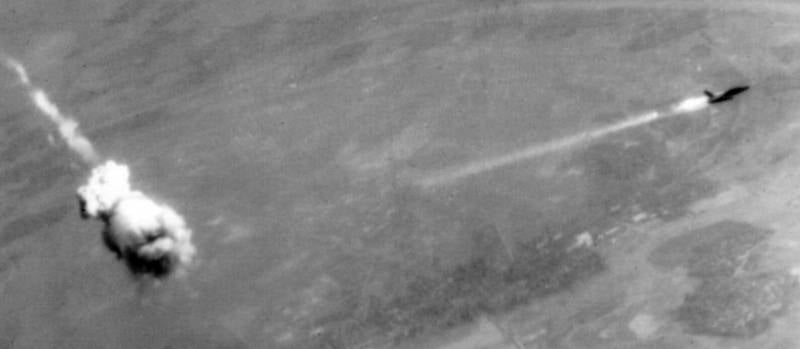
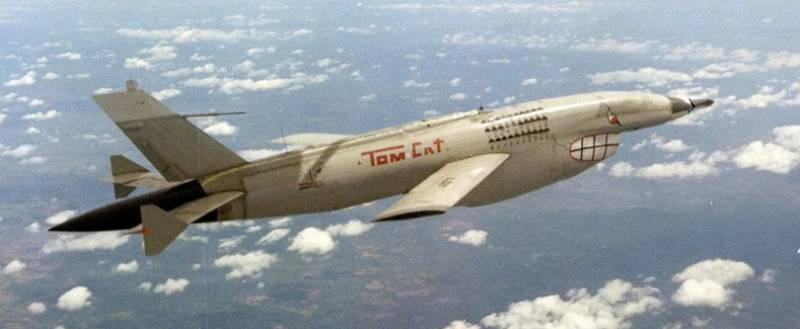

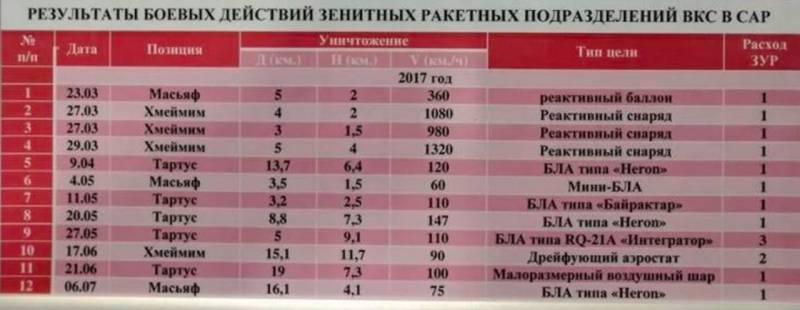
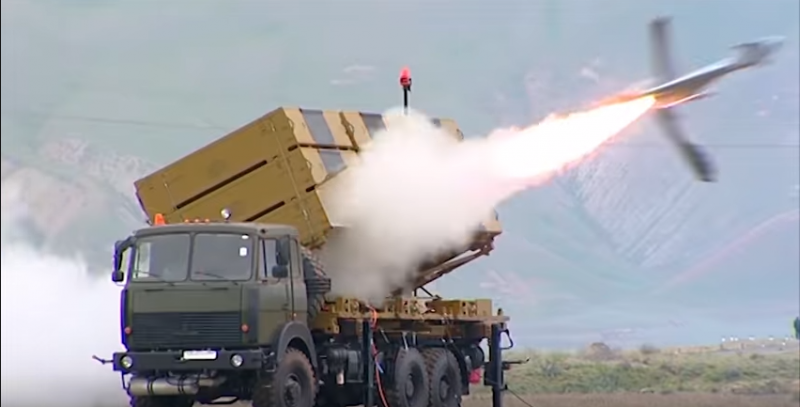

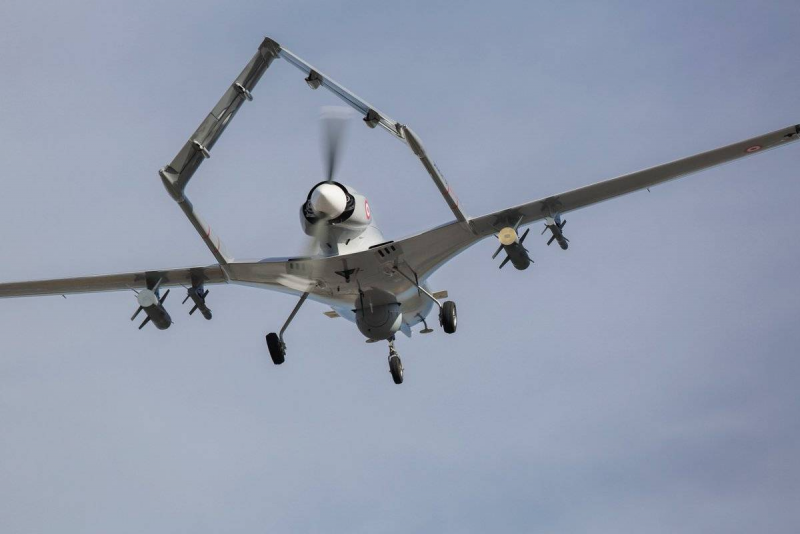

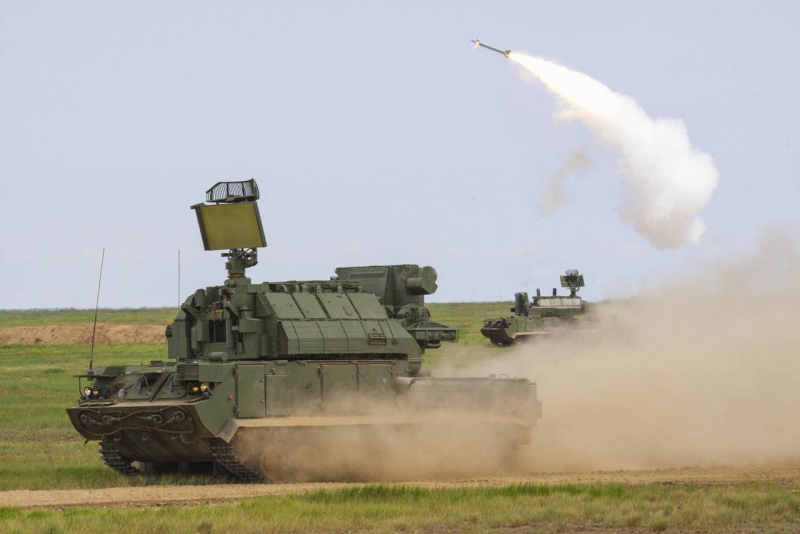
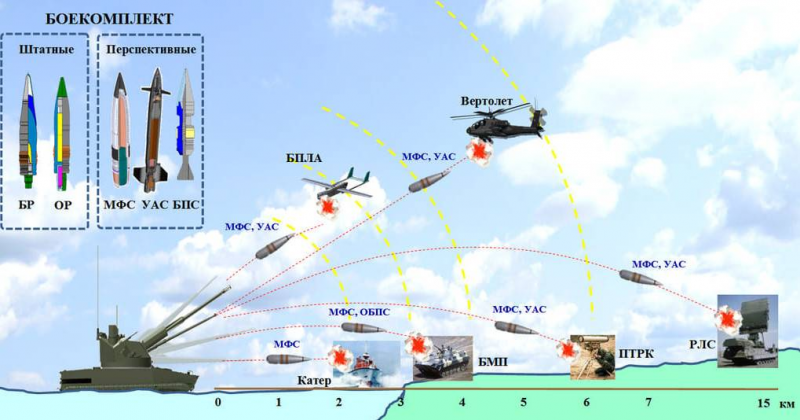
Information